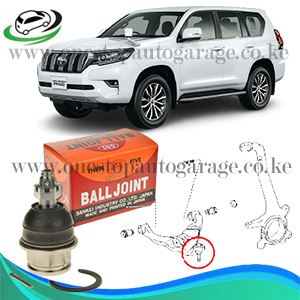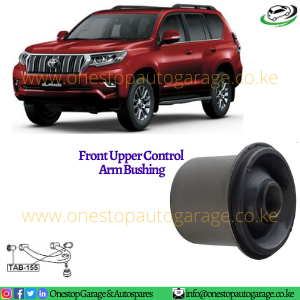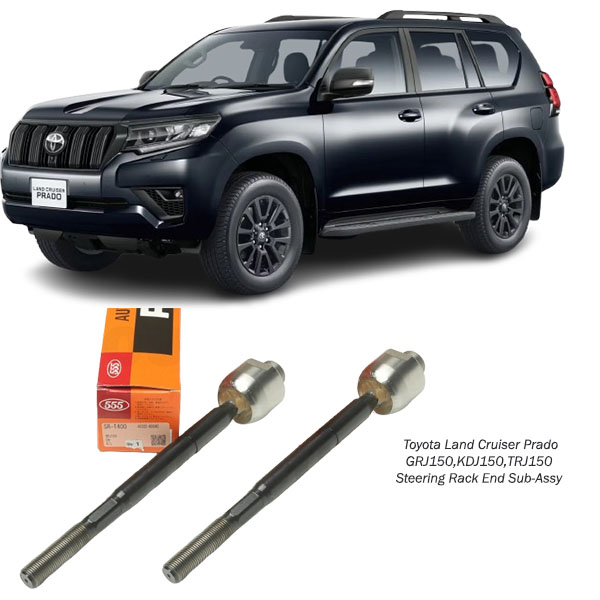-11%
Get Toyota Land Cruiser Prado GRJ150/ KDJ150/ TRJ150 Steering Rack End Sub-Assy SRT400 in Kenya
A rack end, also known as a tie rod end, is a crucial component of the steering system in a vehicle. Here’s a definition and overview of its function:
Definition of Rack End (Tie Rod End):
A rack end is a ball and socket joint that connects the outer end of the steering rack (or rack and pinion) to the steering knuckle or hub assembly of the vehicle. It forms a critical link between the steering mechanism and the wheels, allowing the driver to control the direction of the vehicle.
Function of Rack Ends (Tie Rod Ends):
- Steering Control and Stability:
- Rack ends are integral to the steering linkage system, connecting the steering rack or gearbox to the steering knuckle or spindle.
- They facilitate the transfer of steering input from the steering wheel to the wheels, allowing for precise control and direction of the vehicle.
- Maintaining Wheel Alignment:
- Rack ends play a key role in maintaining proper wheel alignment. They are adjustable components that help align the front wheels to ensure even tire wear and optimal handling.
- Proper alignment also contributes to stable and predictable steering response, enhancing overall driving comfort and safety.
- Absorption of Road Impacts:
- Rack ends, along with other suspension components, help absorb and dampen the impact and vibrations from road irregularities, such as bumps and potholes.
- This contributes to a smoother ride and reduces the transmission of road shocks and vibrations to the steering wheel and vehicle chassis.
- Flexibility and Articulation:
- Rack ends allow for the articulation and movement of the steering system as the vehicle maneuvers over different road surfaces and during cornering.
- They pivot and rotate to accommodate changes in steering angles, ensuring the wheels maintain proper contact with the road for optimal traction and stability.
- Safety and Control:
- Properly functioning rack ends are critical for vehicle safety. They help maintain steering precision and responsiveness, allowing the driver to maintain control of the vehicle in various driving conditions.
- They contribute to the overall stability and handling of the vehicle, especially during emergency maneuvers and evasive actions.
Importance of Rack Ends:
- Steering Integrity: Rack ends are essential for the integrity of the steering system, ensuring that steering inputs are translated accurately to the wheels.
- Alignment and Tire Wear: They play a crucial role in maintaining proper wheel alignment, which extends tire life and improves fuel efficiency.
- Safety Compliance: Functional rack ends contribute to compliance with safety standards and regulations, ensuring the vehicle operates safely on the road.
Signs of Worn or Faulty Rack Ends:
- Loose or Vague Steering: Excessive play or looseness in the steering wheel, or a noticeable delay in response when turning, can indicate worn rack ends.
- Uneven Tire Wear: Irregular wear patterns on tires, such as excessive wear on the inside or outside edges, may suggest improper wheel alignment due to worn rack ends.
- Clunking or Rattling Noise: A noticeable clunking or rattling noise when driving over bumps or uneven surfaces can indicate loose or worn rack ends.
- Steering Wheel Vibration: Vibrations felt through the steering wheel, especially at higher speeds or during braking, may be due to worn rack ends affecting steering stability.
Maintenance and Replacement:
- Regular Inspection: Include rack ends in routine vehicle inspections, checking for signs of wear, damage, or looseness.
- Replacement: Replace worn or damaged rack ends promptly to maintain steering performance and ensure safety.
- Alignment Check: After replacing rack ends, perform a wheel alignment to restore proper steering geometry and ensure even tire wear.
Follow us on Facebook For more parts.



